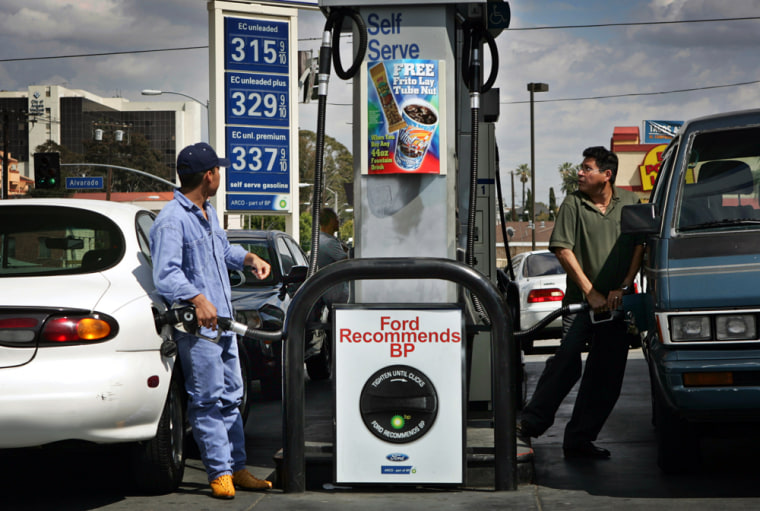With crude-oil prices hitting record levels and gasoline prices in some markets heading toward $4 a gallon, the pain at the pump is getting severe for anyone who gets behind the wheel. Even President George W. Bush is taking notice. On Apr. 25, he announced a four-point plan to curtail the rise in gas prices, including a temporary halt in deposits to the U.S. Strategic Petroleum Reserve.
What can you do to ease the pinch? Start by forgetting almost everything you think you know about saving gasoline. Philip Reed, the senior consumer advice editor at car-shopping site Edmunds.com, and some of his colleagues went out to the California desert to put to the test ways consumers can save money at the pump. Their results are both surprising and helpful, as gas prices head to the stratosphere.
You may have heard this: Because of the aerodynamic drag, driving with the windows open burns more gasoline than driving with the air conditioner on. Nice story for folks who need to justify cranking the A.C., but Reed found that whether you had the windows open or the air conditioner on made little difference in fuel consumption.
Junk in your trunk
"Cars are much more aerodynamic than they used to be," Reed says. "And air conditioners are much more efficient." Reed did see a noticeable difference in consumption when he drove with all four windows and the sun roof open. And if you drive with the windows open and the air on you might as well be a member of al-Qaeda.
Here's another fuel-sipping chestnut: Clean out your trunk for better mileage. Sure, you don't want to be carrying the family dumbbell collection in the back of your car all summer long, but Reed says the extra weight of your golf clubs or Johnny's hockey gear isn't going to make much difference in draining the tank. "That thinking goes back to the days when everyone had rear-wheel drive and put sandbags in their trunk to increase traction in the winter," Reed says.
Another long-held driving dictum: It's better to let your engine idle for a few minutes than it is to turn your car on and off. This is just a straight-up myth. It dates back to the days of the carburetor when people had to step on the gas to get their cars started. Modern fuel injection engines are much more efficient.
Tortoise or hare?
Folks who let the engine run while waiting for their kids at school or chatting with friends burn 19 percent more gas than those who turn the engine off, Reed notes. "It's why hybrids like the Prius are so efficient," he says. "They shut the engine off at every light." So next time you're waiting in the car, go ahead, roll down the windows, turn the engine off, and give Howard Stern a rest.
Want to really improve your fuel efficiency? The biggest fuel-burning culprit is frequent accelerations and stops. You see everyone doing it, racing to the next stop sign and slamming on the brakes. It may get you to work faster, but what's the cost? Reed found that people who make quick starts and stops burn up to 37 percent more fuel than those who coast between lights.
A variation on that strategy involves using your cruise control. People on the highway tend to react too much to what their neighbors are doing, racing ahead to eliminate the gaps between cars and braking when the pack slows down. Better to use the cruise, tapping it up or down whenever you need to adjust your speed. Watch your speed too. It can have a significant effect on fuel consumption. If you drive at 75 mph, instead of 65, you consume about 11 percent more fuel.
Road hogs
You can find Reed's research, as well as a host of other fuel-saving tips, at edmunds.com/fueleconomy. The Web, of course, is a treasure trove of energy-saving advice, as well information that can scare you. At the Automobile Association of America's fuelcostcalculator.com you can type in your make and model car and any two cities and it will tell you how much fuel you'll burn driving between them. Cruising the 760 miles from Los Angeles to San Francisco will burn $46 worth of gas in a Toyota Prius, vs. $131 in a Range Rover.
Want to really feel guilty? The Web site myfootprint.org lets you take an ecological quiz that calculates your impact on Planet Earth. The average American requires the equivalent of 24 acres of land to sustain himself. It seems a lot more people should be using the cruise control.
